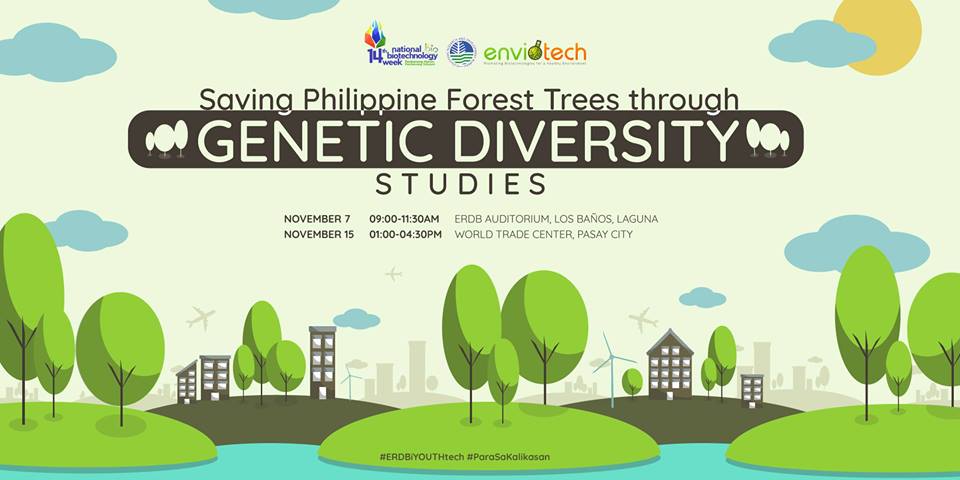November 30, 2020
By Melody Mendoza Aguiba
Six forest tree species have been identified by the Ecosystem Research and Development Bureau (ERDB) as “phytoremediation” tool to rehabilitate the mercury-polluted Palawan Quicksilver Mines (PQM) as part of an aim to transform it into an ecotourism site.
The tree species are eyed to reduce movement of soil contaminants to the groundwater and to the bay. These will stabilize the soil as contaminants are absorbed by the trees’ roots.
The six forest species are Molave (Vitex paviflora); Narra (Pterocarpus indicus)); Ipil (Instia bijuga); Bani (Pongomia pinnata ; Nato (Palaquium luzoniense; and Balayong (Cassia nodosa).
“These plants can quickly absorb chemicals in the abandoned site. The pit has very high volume of very lethal mercury. Every time it rains, the contaminated water runs to the bay (Honda Bay) in Puerto Princesa. We’re now working on a research on these plants’ use to absorb the chemicals,” said ERDB Director Henry A. Adornado in a biotechnology forum.
Phytoremediation is the use of green plants to clean up contaminants in the environment without necessarily removing the contaminants directly.

ERDB, its Agroforestry Research, Development and Extension Center (ARDEC), is implementing the project with Mines and Geosciences Bureau until 2023. By then, the abandoned mine will have been transformed into an ecotourism and research destination in Puerto Princesa City.
“Phytostabilization using forest trees has been suggested as a cost-efficient, socially acceptable, sustainable, and ecologically-sound solution to remediate heavy metal-contaminated areas. It is ideal to use forest trees because they produce high biomass that serves as storage for contaminants being absorbed and provide aesthetic value to the area,” according to ERDB.
The PQM operated from 1953 to 1976 in Barangay Sta. Lourdes producing 2,900 tons of mercury and 2,000,000 tons of mine-waste calcines (retorted ore).
Unfortunately, this was the era when government has not yet adopted policies on mine rehabilitation. The prevailing Philippine Mining Act has now mandated mining companies to fund in advance the future rehabilitation of a mine while still operating.
Initial field planting in observation plots was conducted in October 2019.
The phytoremediation project has received initial success as all the six forest tree species had a 90 to 94% mean survival rate.
Neverthless, Narra and Molave performed with an even promising mean growth increment in terms of height and diameter.
The sample collection for the plant-tissue and rhizospheric soil and their analysis are scheduled before the end of this year. The samples will determine plants’ capability to do actual phytostabilization work that will prevent contaminants’ movement to the bay water and groundwater.
“Other parameters such as soil, total mercury and plants’ total accumulated mercury are needed to determine the potential of the test-plants for phytostabilization,” said ERDB
Metallophytes and hyperaccumulators—plants that can grow and withstand high heavy metal presence in the soil will also be introduced in the area.
One million trees are initially eyed to be planted in Barangay Sta. Lourdes. It is part of a proposal of Puerto Princesa City local government unit to plant Balayong trees in the project area.
The rehabilitation work of PQM will also involve earthworks (topsoil capping, benching for the slope stabilization, additional landscaping); perimeter lightings with underground wiring; construction of three-meter wide concrete pathway and fence to contain the 60 meter-wide abandoned national road; installation of water system; repainting of existing inner and outer fence; and construction of driveway parking, guard house, and mini-information center building.
The MGB and Puerto Princesa’s City Engineering office will be part of the implementation of the infrastructure works under a P10 million fund they are allocating.
MGB earlier funded with P15 million the first phase of rehabilitation of the PQM mine. This involved the isolation of the area with the construction of outer and inner fences within the identified 20-40 meters buffer zone/easement of the pit lake.
Earlier vegetation work has been done by introducing carabao grass, bamboo, and other ornamental plants.
However, rehabilitating the abandoned mine needs an even more important task of cleaning up of mercury-laden soil which is hoped to be done through the contaminant-absorbing tree species.
Aquatic and terrestrial biota sampling are also being conducted. It is carried out along with sediment sampling, research on the health effects of mercury, and a series of information drive and dialogues with partner agencies and mining companies operating in the province.
The abandoned mine has become a health and environmental hazard in the community.
Its operation resulted in heavy metal contamination in the soil and sediments of the surrounding natural environment.
Mercury concentration in the soil, at 1.04-67.5 milligram (mg), was found to be elevated compared to global background of 0.045-0.16 mg.
River sediments had 1.8-119 mg, and marine sediments had 0.04-12.7 mg.
“The mercury in marine sediments was caused by the erosion of mine waste calcines near the pit lake, and calcines used to construct a wharf at the nearby Honda Bay. Mine wastes represent the largest source of mercury contamination in the area, due to the low efficiency of the recovery process during calcination,” according to a study led by Jessie Samaniego.
Because of its impact to marine environment and the health of the surrounding community, the mercury mine has been known as a waste hotspot of the world.

Studies since 1994 indicated that population in the area had high mercury concentration in their hair and blood samples above the recommended exposure of 20 parts per billion.
They complained of symptoms including miscarriages, tooth loss, muscle weakness, paralysis, anemia, tremors.
“Department of Health (DOH) reports say that 33–40% of the 10,000 combined Tagburos and Sta. Lourdes residents have ‘chronic mercury poisoning’ from the exposure to mine tailings and ingestion of marine products with high mercury content,” reported Samaniego along Cris Reven Gibaga , Alexandria Tanciongco and Rasty Rastrullo. (Melody Mendoza Aguiba)





